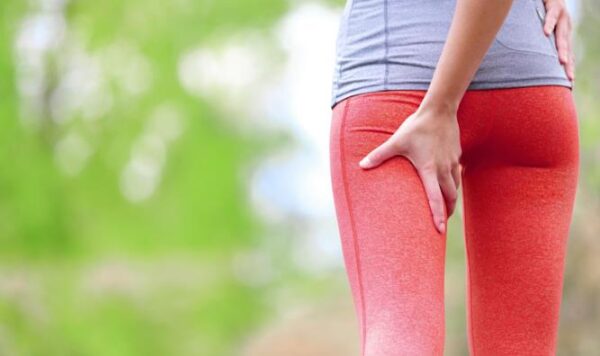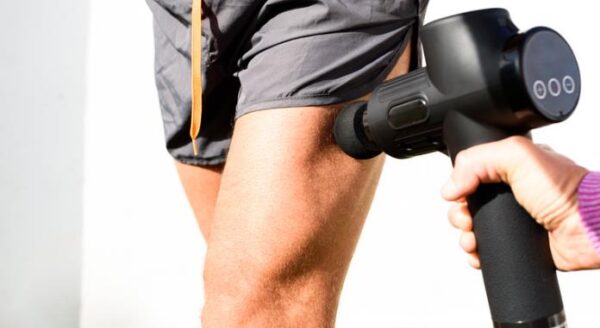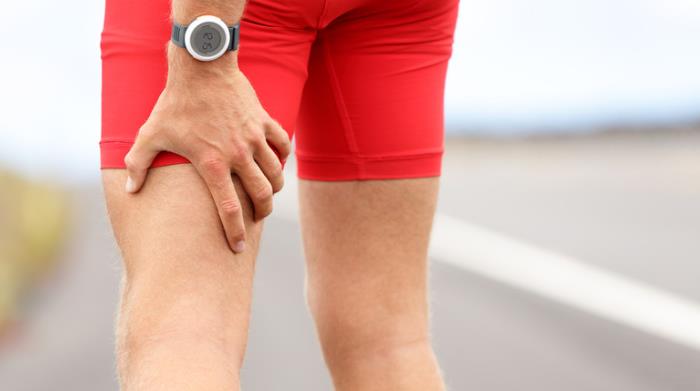Are tight hamstrings cramping your style? Whether you’re an athlete looking to improve flexibility or someone dealing with daily discomfort, learning how to loosen those stubborn muscles is key. In this blog post, we’ll explore effective hamstring stretches, share valuable tips for success, and uncover the incredible benefits of keeping those hammies happy and healthy. Say goodbye to stiffness and hello to greater freedom of movement – let’s dive into finding out how to loosen hamstrings!
When to use hamstring stretches?
Feeling like you’ve been sitting for hours on end? It might be the perfect time to incorporate some hamstring stretches into your routine. Whether you’re working at a desk, after a workout, or even first thing in the morning – these stretches can help release tension and improve flexibility.
If you notice stiffness or discomfort in your hamstrings during daily activities, that’s a clear sign that some stretching is needed. Tightness in this muscle group can lead to issues with posture and mobility over time. By incorporating hamstring stretches regularly, you can prevent future injuries and maintain better overall muscle health.
Don’t wait until the pain becomes unbearable – start integrating these stretches into your day whenever you feel tension building up in your hamstrings. Listen to your body’s signals and give those muscles the care they deserve!
Tips for stretching
To effectively loosen tight hamstrings, incorporating stretching exercises into your routine is key. Here are some tips to help you get the most out of your stretches:
It’s crucial to warm up before diving into deep stretches. Start with some light cardio or dynamic movements to increase blood flow and prepare your muscles for stretching.

When performing hamstring stretches, remember to breathe deeply and relax into the stretch. Avoid pushing yourself too hard too quickly – gradually ease into the stretch and hold it for at least 30 seconds.
It’s important to listen to your body during stretching. Suppose you feel sharp pain or discomfort; back off from the stretch immediately. Stretching should feel challenging but never painful.
Consistency is key when it comes to improving flexibility. Aim to incorporate hamstring stretches into your daily routine, even if just for a few minutes each day.
By following these tips and being mindful of your body’s limitations, you can effectively improve the flexibility of your hamstrings over time.
Benefits of hamstring stretches
Hamstring stretches offer a multitude of benefits beyond just increasing flexibility. By regularly incorporating these stretches into your routine, you can improve your overall posture and reduce the risk of injuries.
Additionally, hamstring stretches help to alleviate lower back pain by releasing tension in the muscles that connect to the pelvis. This can lead to improved mobility and range of motion in daily activities such as walking or exercising.
Improving hamstring flexibility also plays a crucial role in enhancing athletic performance. Whether you’re a runner, weightlifter, or yogi, flexible hamstrings can boost your agility and power during workouts.
Furthermore, engaging in hamstring stretches promotes better circulation throughout the legs, which can aid in reducing muscle soreness and promoting faster recovery post-exercise.
Incorporating hamstring stretches into your fitness regimen offers a wide array of benefits that go beyond simply loosening tight muscles.
How to Loosen Hamstrings? – Best Things to Do
Loosening tight hamstrings is essential for improving flexibility, reducing the risk of injury, and alleviating lower back pain.
Here are some effective ways to loosen your hamstrings:
1. Static Hamstring Stretches
-
- Sit on the floor with one leg extended straight in front of you and the other leg bent at the knee.
- Lean forward from your hips, reaching towards your toes on the extended leg while keeping your back straight.
- Hold the stretch for 15-30 seconds, feeling a gentle pull along the back of your thigh.
- Switch legs and repeat the stretch on the other side.
- Perform 2-3 sets on each leg, gradually increasing the duration of the stretch as your flexibility improves.
2. Dynamic Hamstring Stretches
-
- Lie on your back with both legs extended.
- Lift one leg towards the ceiling, keeping it straight, and hold the back of your thigh with both hands.
- Gently pull the leg towards your torso until you feel a stretch in your hamstring.
- Hold for a few seconds, then release and switch legs.
- Repeat the movement for 8-10 repetitions on each leg, moving smoothly and dynamically.
3. Standing Forward Bend (Uttanasana)
-
- Stand with your feet hip-width apart and hinge forward from your hips, keeping your knees slightly bent.
- Allow your upper body to hang naturally towards the floor, reaching your hands towards your feet or the ground.
- Relax your head and neck, and let the weight of your upper body gently stretch your hamstrings.
- Hold the stretch for 15-30 seconds, breathing deeply and allowing your muscles to release tension.
- Slowly roll up to a standing position to release the stretch.
4. Seated Forward Bend (Paschimottanasana)
-
- Sit on the floor with both legs extended in front of you and your spine tall.
- Inhale as you lengthen your spine, then exhale and hinge forward from your hips, reaching towards your feet.
- Keep your back flat and your knees slightly bent to protect your lower back.
- Hold the stretch for 15-30 seconds, feeling a gentle stretch along the back of your legs.
- Relax into the stretch with each exhale, allowing your hamstrings to release tension.
5. Foam Rolling
-
- Sit on the floor with a foam roller placed horizontally under your thighs.
- Use your hands to support your weight and slowly roll back and forth from your hips to just above your knees.
- Apply gentle pressure as needed, focusing on any tight or tender areas in your hamstrings.
- Spend 1-2 minutes foam rolling each hamstring, breathing deeply, and relaxing into the pressure.
Incorporate these stretches into your daily routine to gradually loosen tight hamstrings and improve flexibility over time. Remember to listen to your body and avoid overstretching to prevent injury.
How to Loosen Hamstrings Without Stretching?

Here are some effective ways to loosen your hamstrings without stretching:
- Self-Myofascial Release (SMR):
- Use a massage ball or tennis ball to perform self-myofascial release on your hamstrings.
- Sit on the floor with your legs extended and place the ball under one hamstring.
- Apply gentle pressure and roll the ball back and forth, focusing on areas of tightness.
- You can also perform circular motions or hold pressure on specific trigger points to release tension.
- Dynamic Movement:
- Incorporate dynamic movements that engage your hamstrings without static stretching.
- Try exercises like leg swings, where you swing one leg forward and backward in a controlled motion while standing, focusing on increasing the range of motion.
- Perform high knees or butt kicks, where you alternately lift your knees towards your chest or kick your heels towards your glutes while walking or jogging in place.
- These dynamic movements help to warm up and mobilize the hamstrings without holding static stretches.
- Strengthening Exercises:
- Strengthening the muscles surrounding the hamstrings can indirectly improve flexibility and reduce tightness.
- Include exercises like bridges, deadlifts, Romanian deadlifts, and hamstring curls in your workout routine to build strength in the posterior chain.
- Stronger muscles provide better support and stability for the hamstrings, reducing the risk of tightness and injury.
- Hydration and Nutrition:
- Ensure you’re adequately hydrated and consuming a balanced diet rich in nutrients that support muscle health.
- Proper hydration and nutrition help to maintain muscle elasticity and prevent muscle tightness and cramping.
- Stay hydrated by drinking plenty of water throughout the day, and include foods high in magnesium, potassium, and antioxidants in your diet to support muscle function and recovery.
How to Loosen Hamstrings With a Massage Gun?

Using a massage gun can be an effective way to loosen tight hamstrings and relieve muscle tension.
Here’s how to use a massage gun for hamstring tightness:
- Select the Right Attachment:
- Most massage guns come with different attachment heads designed for various purposes. Choose a softer attachment head, such as the ball or round head, to target the hamstrings effectively.
- Warm-Up the Muscles:
- Before using the massage gun, it’s essential to warm up the muscles to increase blood flow and prepare them for massage. You can do this by engaging in light cardiovascular exercise or dynamic stretching.
- Position Yourself Properly:
- Find a comfortable position that allows you to access your hamstrings easily. You can sit on a chair with your legs extended or lie on your back with your legs bent and feet flat on the floor.
- Apply the Massage Gun:
- Turn on the massage gun and gently press the attachment head against your hamstrings.
- Start with the lowest speed setting and gradually increase the intensity as needed.
- Move the massage gun along the length of your hamstrings, focusing on any areas of tightness or discomfort.
- Apply light to moderate pressure, and avoid pressing too hard, especially if you’re new to using a massage gun.
- Use Long Strokes:
- Move the massage gun in long, sweeping strokes along the entire length of your hamstrings, from the glutes to just above the knees.
- Focus on covering the entire muscle group and spend extra time on any knots or tight spots you encounter.
- Target Trigger Points:
- If you notice specific areas of tension or trigger points in your hamstrings, you can concentrate the massage gun on these areas for deeper relief.
- Hold the massage gun on the trigger point for 15-30 seconds, applying steady pressure to help release tension.
- Stay Hydrated and Rest:
- After using the massage gun, drink plenty of water to stay hydrated and aid in muscle recovery.
- Allow your muscles time to rest and recover before engaging in intense physical activity.
- Repeat as Needed:
- Depending on the severity of your hamstring tightness and your individual needs, you can use the massage gun for 5-10 minutes per session, 1-2 times per day.
- Incorporate massage gun therapy into your regular routine to maintain hamstring flexibility and prevent tightness from recurring.
By following these steps and using a massage gun properly, you can effectively loosen tight hamstrings and experience relief from muscle tension and discomfort.
Conclusion
Incorporating hamstring stretches into your routine can greatly improve flexibility, reduce the risk of injury, and enhance overall performance in physical activities. Remember to listen to your body, be consistent with your stretching regimen, and gradually increase the intensity of your stretches over time. By following these tips and understanding the benefits of hamstring stretches, you’ll be well on your way to loosening up those tight hamstrings and experiencing improved mobility and comfort in your daily life. So why wait? Start incorporating these stretches into your fitness routine today for healthier and happier hamstrings!

